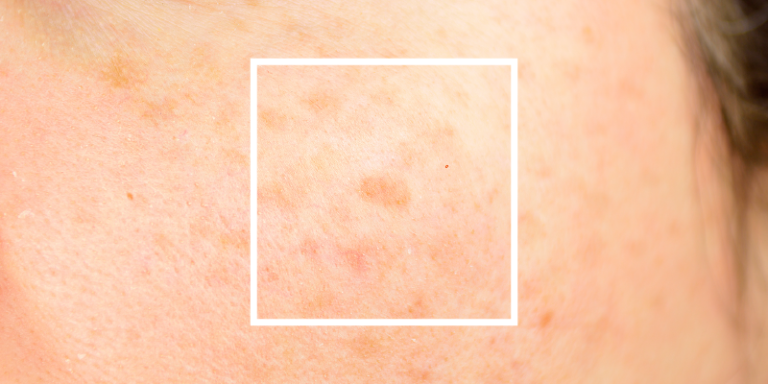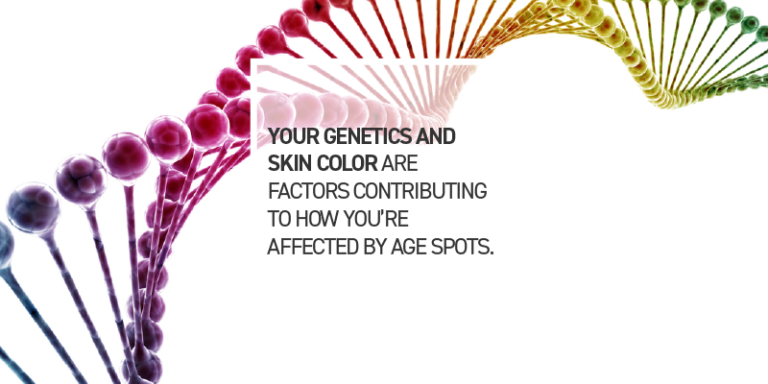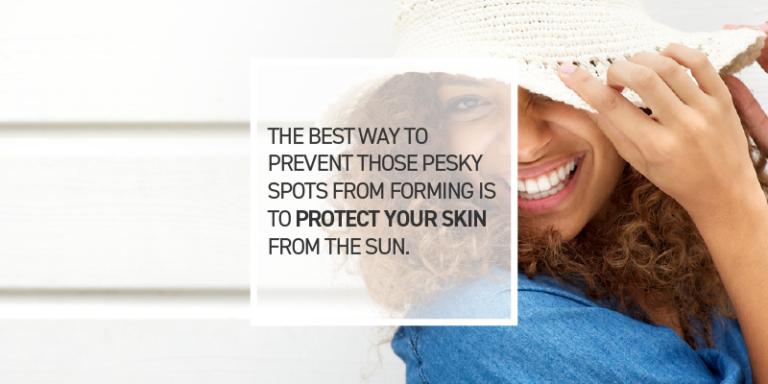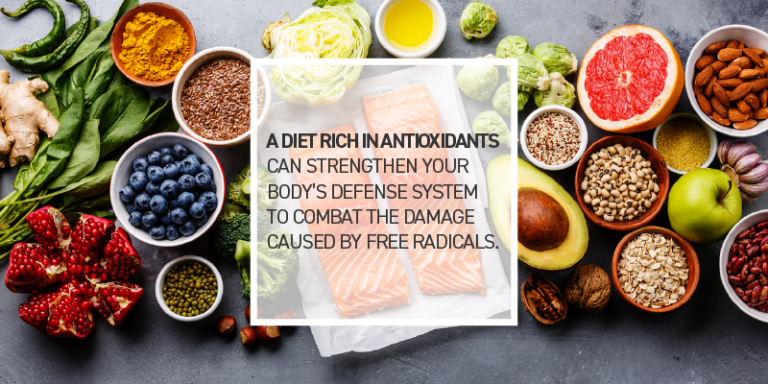Skincare Tips from MDSUN Skin Care®

The hyperpigmentation from age spots can be known by a host of other names: senile lentigo, lentigines, sun spots, or liver spots. These dark spots appear on the face, arms, and hands as we age.
So, age spots are a normal part of the aging process of your skin, right?
Not hardly. While nicknamed “age spots” because they typically don’t start to make an appearance until later in life, they actually have very little to do with “normal” aging. What they really are is evidence of your history of not taking very good care of your skin. They can be a major result of sun damage, appearing in the areas of our skin that get the most exposure to UVA/UVB rays.
Where Do Age Spots Come From?

Your genetics and skin color are factors contributing to how you’re affected by age spots. People with red hair and light skin are more likely to develop them than darker-skinned people, but sun exposure is the big whammy. When your skin absorbs too much sun, it produces extra melanin. That’s the pigment that gives your skin color and makes you tan. Melanin’s purpose is to help protect your skin from harmful UV damage. Over time, melanin clumps together, forming age spots. Uncontrolled free radicals instigate that process.
While anyone can develop them, age spots are typically more common in people over 40. Sun exposure accumulates over time, and there are some people that just produce more melanin as they age.
“Damage due to inflammation, UV exposure, and other environmental insults cause the cells to produce more pigment to protect themselves,” says Carl R. Thornfeldt, MD, a dermatologist in Fruitland, ID. Changes in estrogen levels (due to birth control pills or pregnancy) can also play a role.
This results in uneven pigmentation, a common condition that can affect any skin tone, “but in different ways,” says Elizabeth Tanzi, MD, Assistant Clinical Professor of Dermatology at George Washington University. Lighter skin tones tend to develop freckles and sunspots, while darker skin looks shadowed or patchy, she explains.
How To Prevent Age Spots

The best way to prevent those pesky spots from forming is to protect your skin from the sun. Wear protective clothing when you’re outside. Wear long sleeves and pants and a wide-brimmed hat. Many clothing companies utilize materials with an ultraviolet protection factor (UPF). UPF 40 to 50 offers the best protection. Of course, it’s always best to stay in the shade when the sun’s at its highest and most intense, between 10 am and 4 pm.
Any exposed skin should be covered with a generous portion of sunscreen. Apply a broad-spectrum sunscreen that’s at least SPF 30. That should protect you from UVA rays, which cause aging and sun damage, and UVB rays, which cause burning. You’ll want to be sure to apply it 15 to 30 minutes before you go outside to give it enough time to absorb. Re-apply it every two hours, or more if you’re swimming or perspiring.
Since free radicals are contributing factors to age spots, utilizing an effective skincare regimen that incorporates beneficial antioxidants (which neutralize free radicals) can be a great way to slow the process down.
Other Factors to Prevent Age Spots

Diet is a contributing factor, too. Cut out the polyunsaturated fats like vegetable oils, margarine, and nut oils and trade them for saturated fats like coconut oil, real butter, and animal fats. Get rid of excess iron in your diet. Most processed foods like grain products are fortified with iron. You shouldn’t need that multivitamin if you’re eating a good, balanced diet full of variety. Your body stores more iron when it’s low on copper, so eat lots of foods like shellfish, liver, and dark chocolate.
A diet rich in antioxidants can strengthen your body’s defense system to combat the damage caused by free radicals. Ripe fruits and easy-to-digest veggies are great sources.
Excess estrogen levels have been linked to age spot formation, and multiple factors can contribute. Be aware if you take synthetic hormones like the pill, have increased stress, or protein deficiency because all of these are known to contribute to increased estrogen levels.
Treating Age Spots That Have Already Appeared
Did you start thinking about prevention a little too late? There are some things that you can do to help treat or reduce the appearance of age spots. Some of them require a trip to your dermatologist, and some OTC treatments are effective at bleaching them.
Vitamin C is a popular ingredient for treating skin pigment issues, as it brightens skin naturally and can help to fade out hyperpigmentation. It can also help to prevent your body from creating too much melanin.
Be cautious of what products you’re purchasing, as some may contain ingredients like mercury that can cause serious health concerns. When in doubt, it’s best to consult your dermatologist.
Laser treatment is also effective and may provide longer-lasting results than the creams, though it has some temporary side effects like crusting or temporary darkening of the age spots. Those spots will usually fade quickly.
Other procedures may not be quite as effective and tend to have more side effects. During cryotherapy, the spots are frozen, injuring the darkened cells. As they heal, the skin appears lighter. During microdermabrasion, the skin is essentially sanded down, allowing for a new layer to be grown on top. With chemical peeling, an acid is applied to the skin to burn the top layer off, also allowing new growth to take its place. While they can be effective, none of these are particularly fun. Side effects such as scarring can be limited when performed by a board-certified dermatologist.
Skin Care Tips From MDSUN Skin Care®
Please Visit Our Official Website - MDSUN Skin Care




Comments
Post a Comment